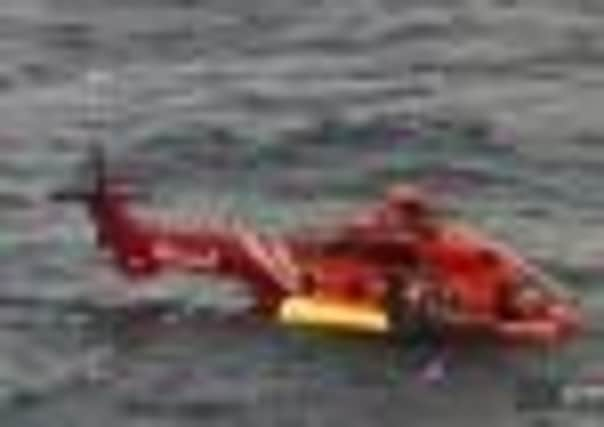AAIB: CPI failed to deploy in Super Puma ditchings


• A new safety bulletin has now revealed potentially significant problems with the crash position indicator system (CPI)
• The European Aviation Safety Agency has been asked to order Eurocopter to amend its flight manuals
Advertisement
Hide AdAdvertisement
Hide AdTests are still being carried out to determine the exact cause of a “potentially catastrophic” mechanical failure in the gearbox of two Super Puma EC225s which forced two of the North Sea “workforces” to ditch in the North Sea in 2012. A Super Puma, operated by CHC, was forced to ditch of Shetland in October. Another Super Puma EC225, operated by Bond, ditched 30 miles off the coast of Aberdeen in May.
Both ditchings have led to the discovery of “potentially catastrophic” mechanical failures in the gearbox - identical cracks near a weld in the main vertical gear shaft. In both cases, tests have shown identical problems which resulted in a false alarm being issued over a lubrication system failure.
CPI
But a new safety bulletin, issued by the Government’s Air Accident Investigation Branch (AAIB), has now also revealed potentially significant problems with the crash position indicator system (CPI), fitted to both aircraft.
The CPI consists of a position indicator beacon, a beacon release unit, a cockpit control panel, a water activated switch and an aircraft identification unit.
The deployment of the CPI is designed to be activated either by significant g-force acceleration to the aircraft, immersion in water or manual operation by the pilot. And it is meant to be automatically projected away from the aircraft and to remain afloat and transmit the position of a downed aircraft to the emergency services via satellite.
The AAIB bulletin reveals that the CPI system on the Super Pumas involved in both of last year’s ditchings failed to deploy and remained attached to the helicopters.
The CPI attached to the Super Puma involved in last May’s ditching failed to deploy, despite photographic evidence showing that the sea level in the cockpit had been above the level at which the water activated switch was mounted.
The report continues: “The crew did not activate the CPI beacon, either by selecting ‘transmit’ or ‘deploy’ on the cockpit control panel, prior to the emergency evacuation. As such, no distress signal was detected from the helicopter during the accident.”
Advertisement
Hide AdAdvertisement
Hide AdIn the October accident the flight crew had manually selected the ‘transmit’ switch during the final preparations for ditching. But a “detect only” alert had been picked by the Aeronautical Rescue Coordination Centre at RAF Kinloss. The alert did not immediately provide any positional information.
The bulletin states: “The CPI beacon remained attached to the helicopter and continued to transmit until it was recovered to land. Photographic evidence and water damage within the cabin indicated that the water level was above that of the water activated switch, while the helicopter was floating.”
Similar failure
The report reveals that there had been similar failure of the CPI in another incident in February, 2009, in which a Super Puma, with 16 oilmen and two pilots on board, ditched 125 east of Aberdeen. The failure to deploy “contributed to the delay in locating and rescuing the survivors.”
The bulletin states: “The CPI is a primary radio location aid, to alert search and rescue authorities, and assist location of the helicopter and survivors in the event of an aircraft distress situation, such as ditching.
“Whilst further work is required to support any final conclusions, issues relating to the continuity of the helicopter wiring when submerged, the design of the water activated switch and the location of the water activated switch, relative to the water level following the ditching are being investigated as possible causes of the non-deployment of the CPI.”
The European Aviation Safety Agency has been asked to order Eurocopter, the manufacturer of the Super Puma to amend its flight manuals to ensure they contain information about the potential problems with the CPI while investigations continue.